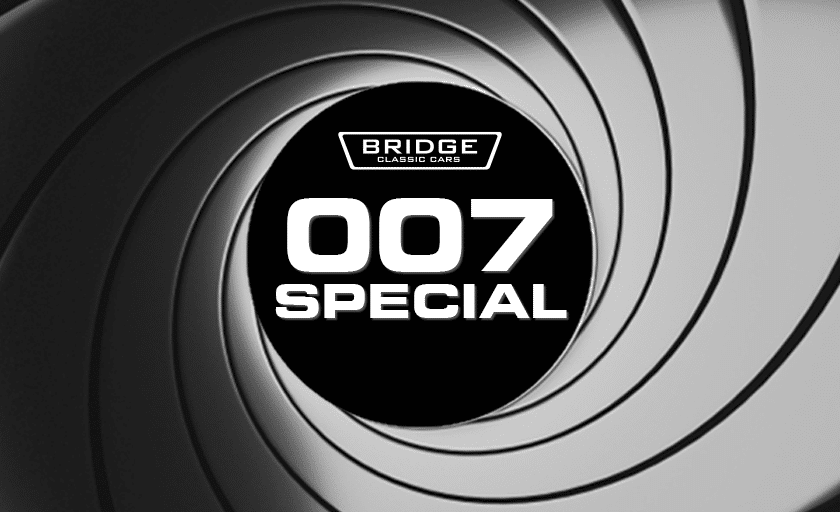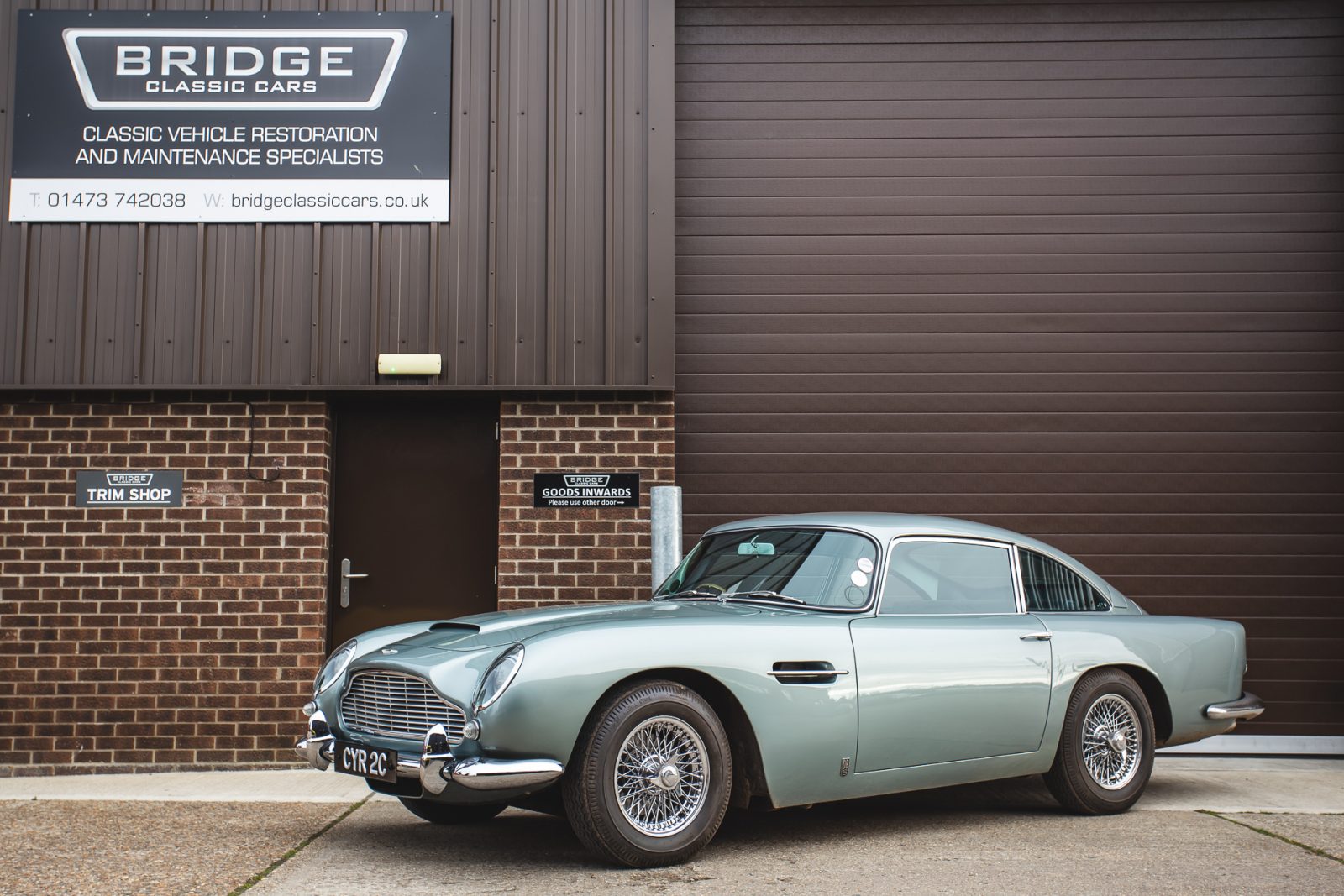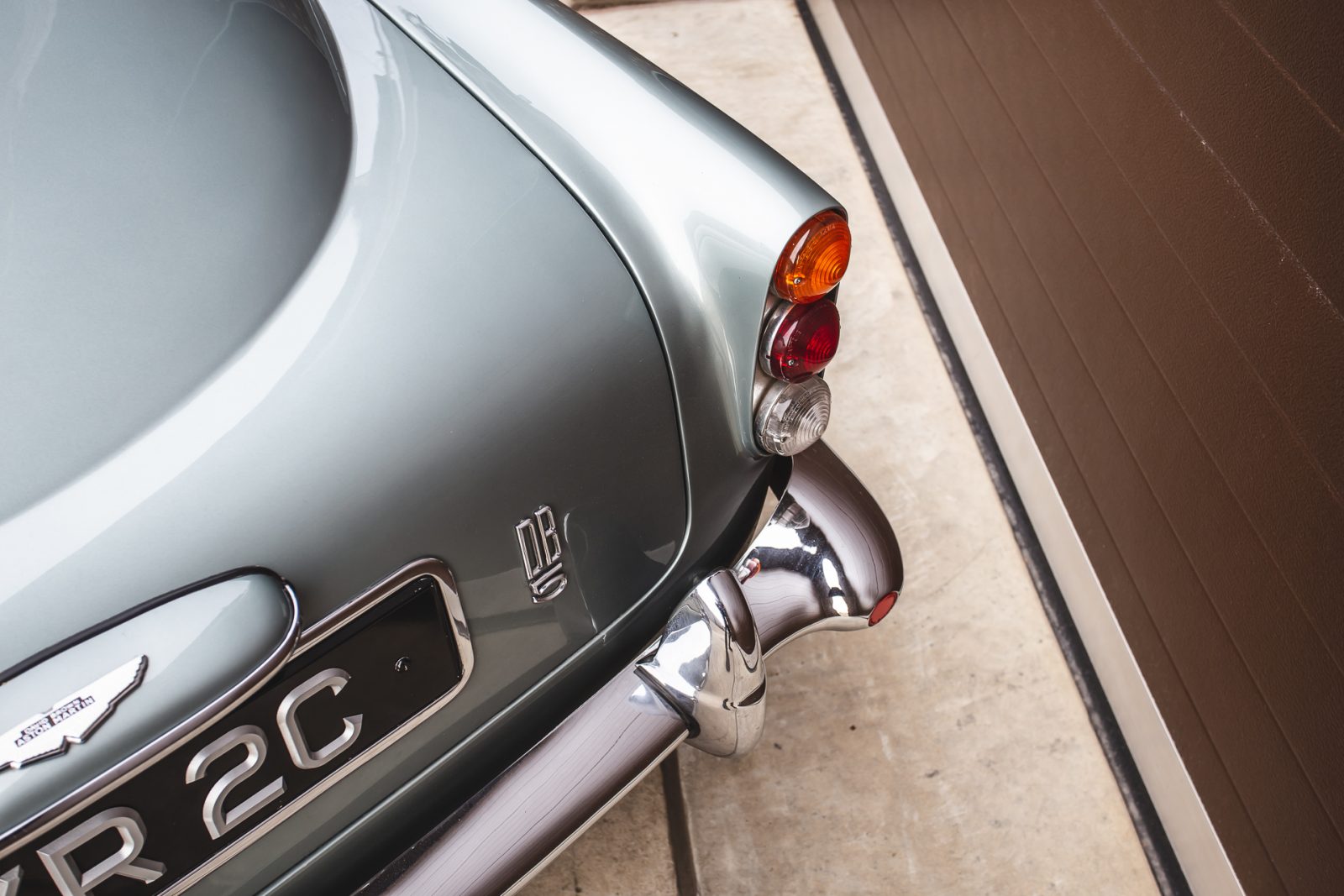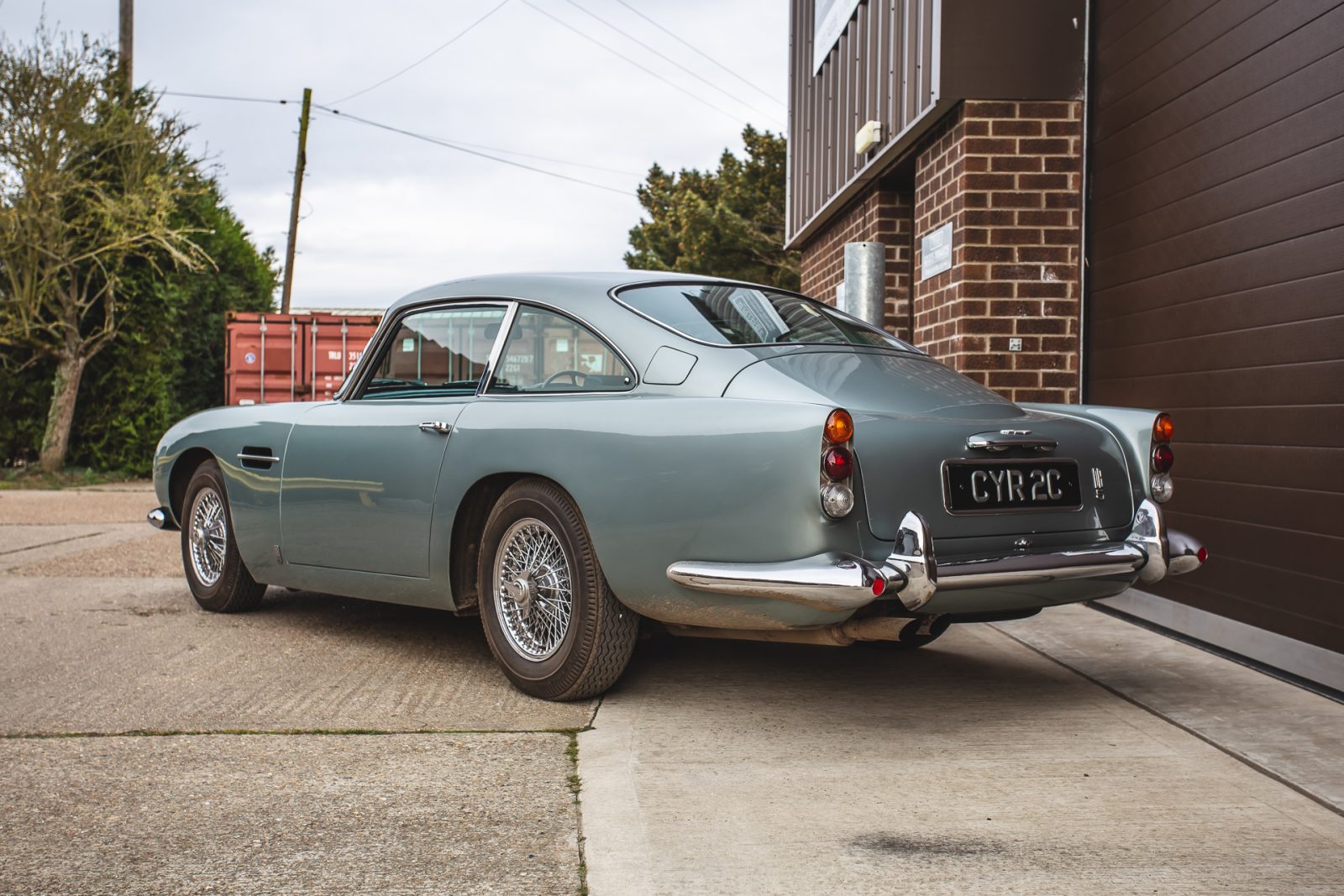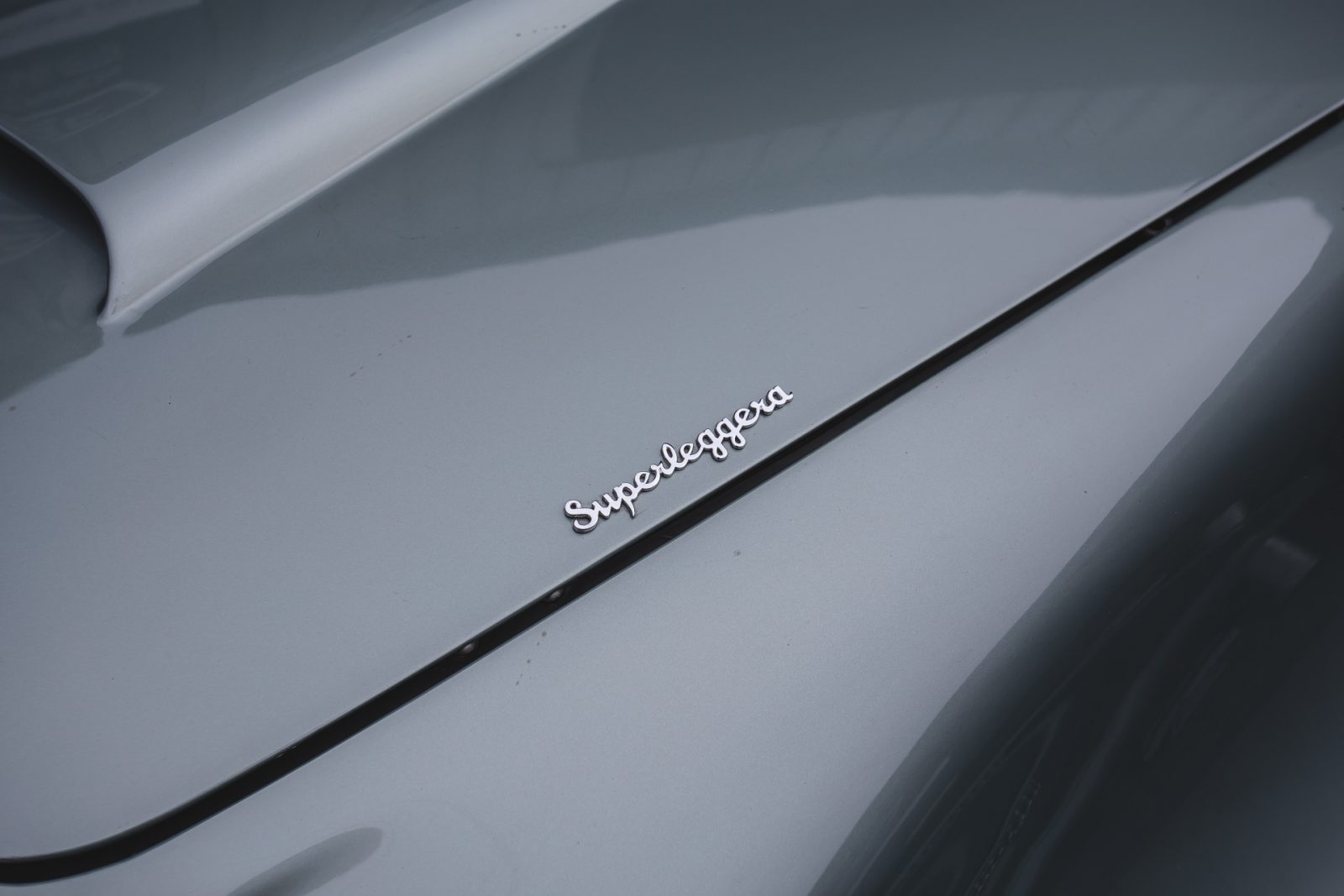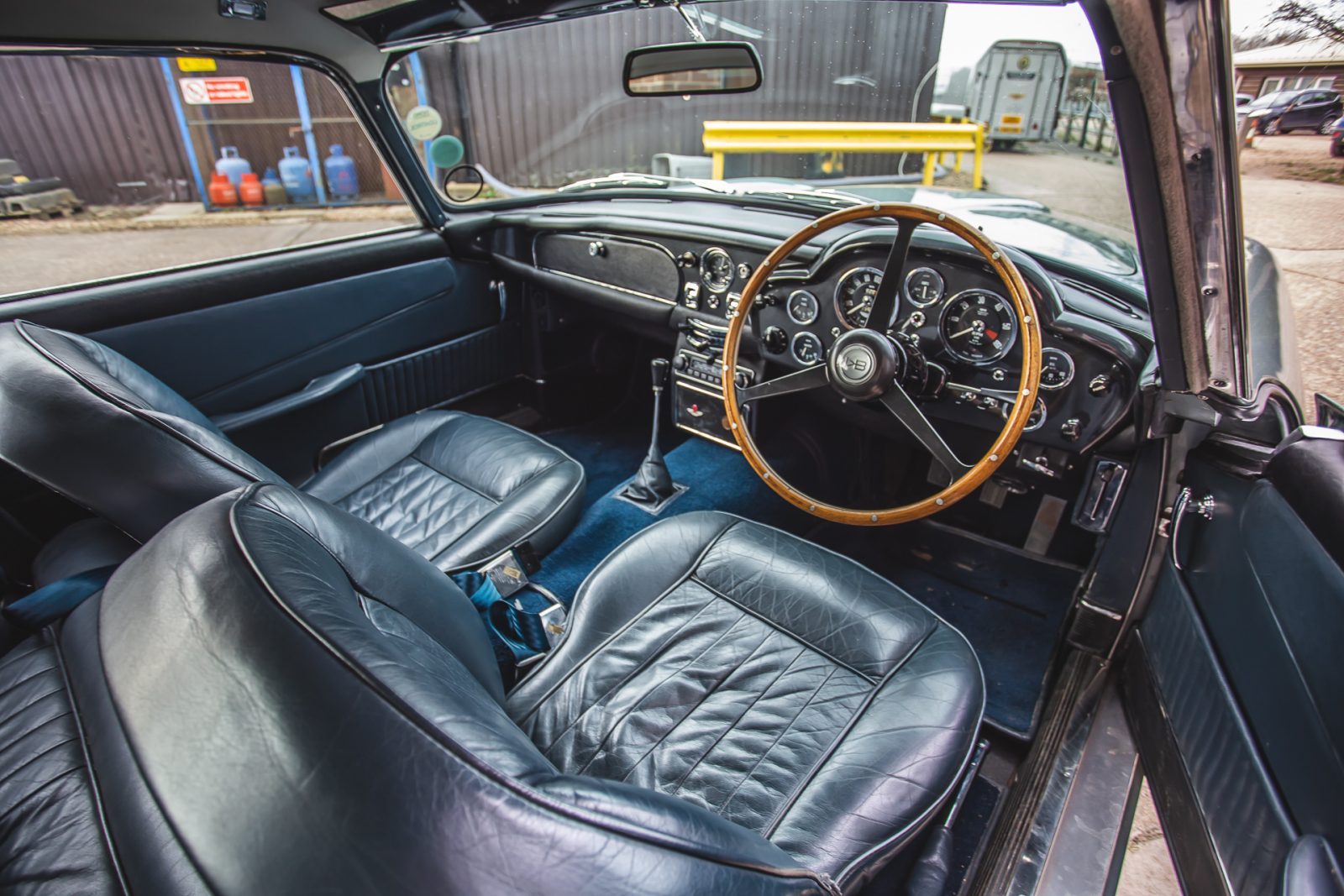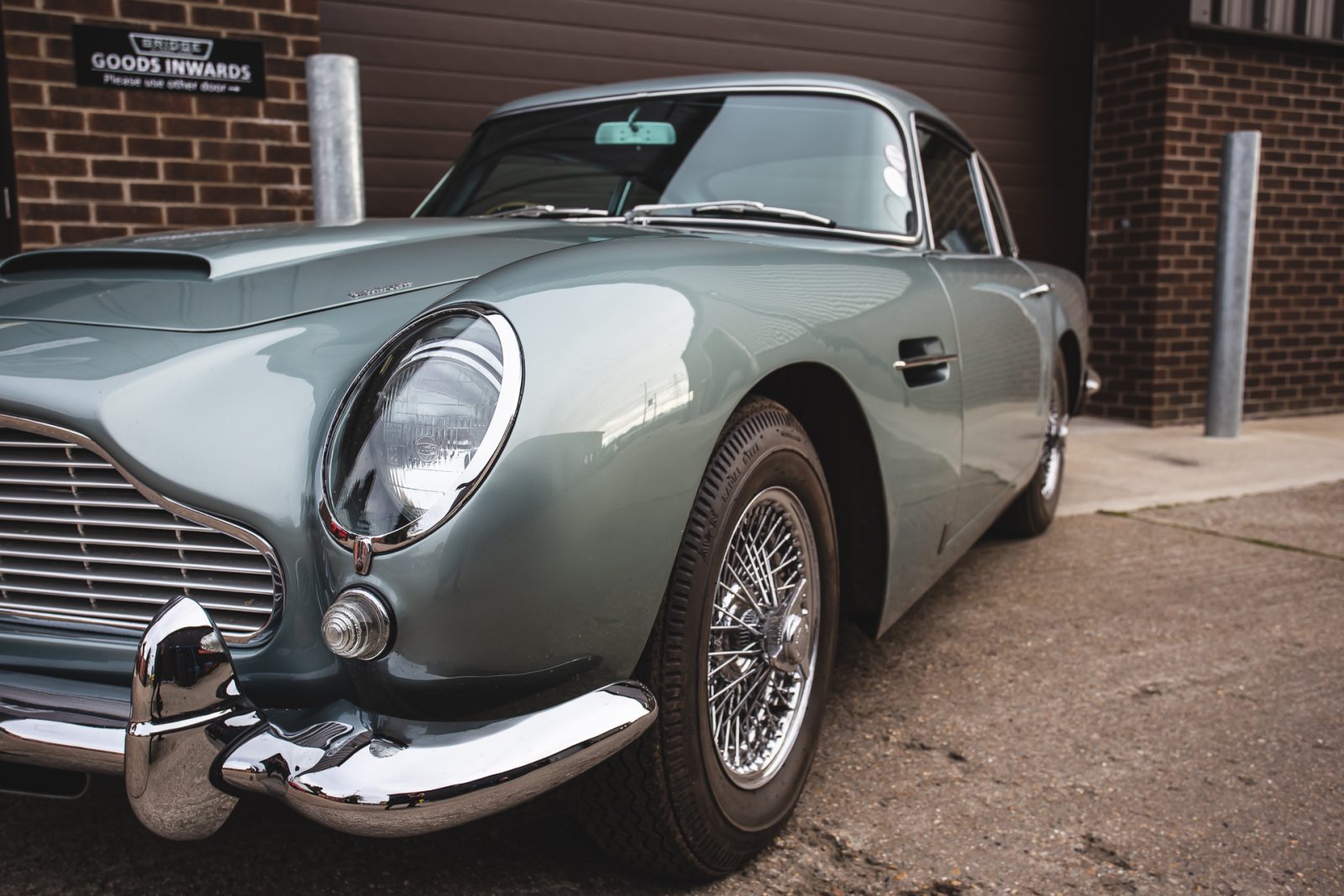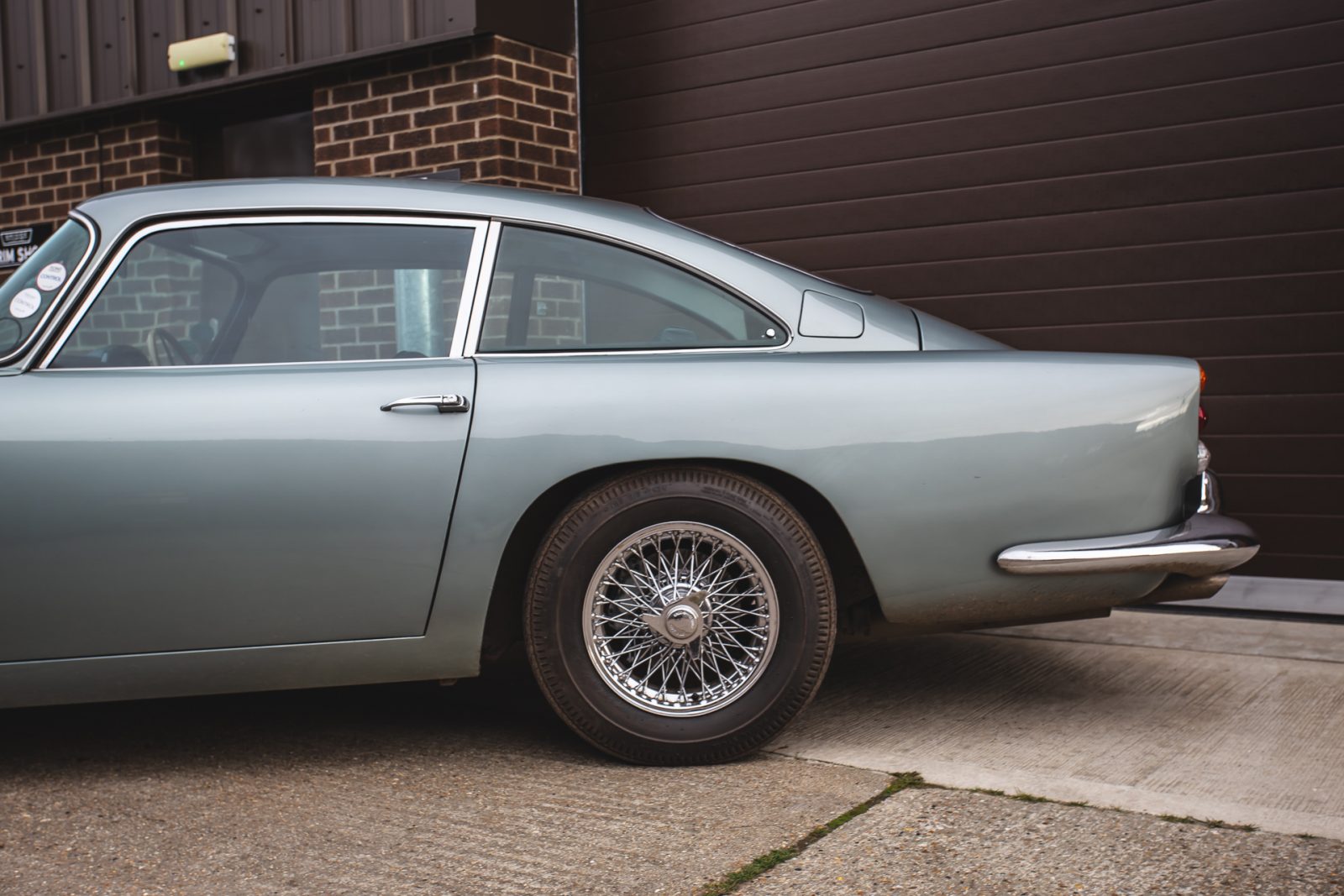The Aston Martin DB5. Many believe it to be The Most Famous Car in the World. It’s claimed by some that over half the worlds population can tell you that James Bond, drives an Aston Martin.
The sleek, elegant lines of the DB5 made it a perfect candidate when the producers of the newly launched 007 franchise went looking for the latest car to be used by Her Majesty’s most faithful servant.
The DB5 would hit theatre screens in September of 1964, with the release of the 3rd James Bond Film, Goldfinger. This is where a now faithful audience would first catch sight of the car now known as the Goldfinger DB5.
Launched in 1963, the DB5 would serve as a replacement for the previous DB4. A long-legged, elegant GT car beloved by all and a favourite of the newly hip and happening. The DB5 used a Superleggera construction method. A sculpturesque spaceframe which keen-eyed craftsmen would then cloth in mirror-like, curvaceous panels. This appealed to the newly formed ”Q-Branch”.
At Pinewood, the designers had been working out what car should James Bond, the worlds most famous spy, drive. Ideas were bandied around a Jensen CV8, Jaguar E Type etc. But, only one car truly personified the style and the times of Flemings fictional spy. It was the DB5, with that the production the approached Aston Martin. The DB5 worked on another level as in the book Goldfinger, Bond was noted as driving an Aston Martin DB MkIII.
At first, Aston Martin was understandably hesitant at allowing their newest pride and joy to become a film star like any concerned parent would be. However, they did agree to sell two cars to the production team. The first was actually a DB5 Prototype, an earlier DB4 production car that had been modified to develop the DB5.
This prototype car would become the hero of the story. From the moment it arrived at the Pinewood workshop, the DB5 was busily modified to accept the growing list of gadgets being added to the script. For interest, in the book, the only mention of a gadget and an Aston Martin was a passage describing a smokescreen. But, for a film, it needed to get bolder and bolder.
Guy Hamilton, the film’s director, had the request which would now go down in history as one of the most memorable film lines of all time. His stepson had come to him one day and said he had seen an ejector seat in a film or a TV show. This sparked something in Hamilton. He took the idea to Production Designer Ken Adams and Engineer John Stears who said it might be possible but wouldn’t actually work, so when Connery says the famous line ” Ejector Seat? You must be joking.” Unfortunately, the crew were joking. The scene in the film was shot in multiple takes using careful angles and rigs to portray the henchmen’s unfriendly exit from the DB5. To this ever-expanding and extraordinary list, Hamilton added the revolving number plate mechanism. This famously came from Hamilton who was getting dozens of parking tickets issued against his car during production. Along with those, is the bulletproof rear screen plate and the oil hoses which drop out of the rear brake lights of the DB5.
This car (the second DB5 used for production was completely standard), was converted to become the stunt vehicle for Goldfinger. The whole conversion from DB5 prototype to The Worlds Most Famous car took a mind-blowing 6 weeks from the start of work to being delivered to set.
During both Goldfinger and lately Thunderball, the DB5s would use the number plates BMT 216A). Easily identifiable as the Goldfinger DB5s and also the number plate used on the recent DB5 Continuations known as The Goldfinger DB5s which have exact copies of the modifications to the stunt cars. These cars would then be unmodified in 1968 and sold to private owners.
But in 1995, the DB5 would return to the 007 James Bond series in the film GoldenEye. The DB5 breaks cover at the start of the film by going head to head against a Ferrari F355 GTS driven by assassin Xenia Onatopp. This particular DB5 in GoldenEye runs the registration BMT 214A. A nod to the original cars used in the earlier films. 11 years later, the DB5 would make its appearance in the first of the Daniel Craig era of James Bond with Casino Royale (the first of the Bond novels by Ian Fleming). However, this car according to Bond aficionados has nothing to do with the legendary BMT 216A. Seeing as how it’s a left-hand drive car and is wearing Bahamian numberplates.
For the world to see BMT 216A we would have to wait until 2012’s Skyfall. This is the car bond uses to escape back to his family home in Scotland. It’s also famously the film that gets destroyed out on a boggy crag. Thankfully, a series of scaled miniatures were used for this and no original DB5s were harmed during production. However, in the 007 film Spectre, the shell of the DB5 can be seen in Q’s workshop. With Bond raising a smile as he walks by his beloved DB5. Then at the end of the film, he is seen powering his way through Whitehall in London to a wonderful chorus of the 4 litre Straight-Six.
That brings the cinematic lineage of BMT 216A (the Goldfinger DB5) right up to the modern-day. In the latest film, No Time to Die, Bond is seen back behind the wheel of his Silver Birch DB5. This time, however, it is armed to the teeth. Machine guns behind the headlights but most interestingly is the faint outline of an ejector seat panel over the passenger seat… a clue perhaps? This car though is actually using the numberplate A426900, possibly one of the options from the original revolving idea Guy Hamilton proposed for the car back in 1964.
Famously though, in 1997 a very certain DB5 used during the production would make world news for its life away from the silver screen. In 1997, a DB5 known as The Road Car was being stored at an aircraft hanger belonging to its then owner in Boca Rotan, Florida. One night, however, the car disappeared. Sparking furious media debate worldwide as to where the car really is. Many believe the car to have had to have been destroyed due to its famous number. This car appeared in all of the press for the early films as well as cameo’s in multiple films such as Cannonball Run.
So, that brings all of us up to speed about the first Bond car. But, was it?

